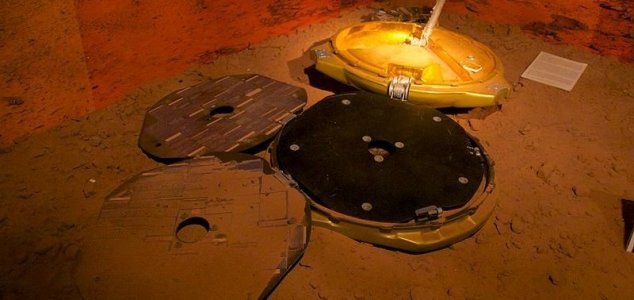
A model of the Beagle 2 lander as it might appear on Mars today.
Researchers have succeeded in enhancing the images taken of the ill-fated probe’s final resting place.
Developed by a team of British academics and headed up by the late Colin Pillinger, Beagle 2 was an ambitious, low-budget spacecraft designed to be carried to Mars as part of ESA’s 2003 Mars Express mission where it would detach, descend and land on the planet’s surface.
While the little probe managed to reach Mars without any problems, all contact with it was lost soon after deployment and for the next 12 years its fate would continue to remain a complete mystery.
It wasn’t until scientists operating the HiRise camera on NASA’s Mars Reconnaissance Orbiter spotted Beagle 2 on the Martian surface in 2015 that its whereabouts were finally determined.
Now researchers at University College, London have released new enhanced versions of these images that show the probe’s final resting place on Mars in more detail than ever before.
“Given the size of Beagle 2, even with super-resolution images you are not likely to see more than a series of blobs because it is so small,” said Mark Sims of the University of Leicester.
“What it does show is that it is on the surface and it is at least partially deployed.”
Originally posted 2016-05-04 21:55:09. Republished by Blog Post Promoter











